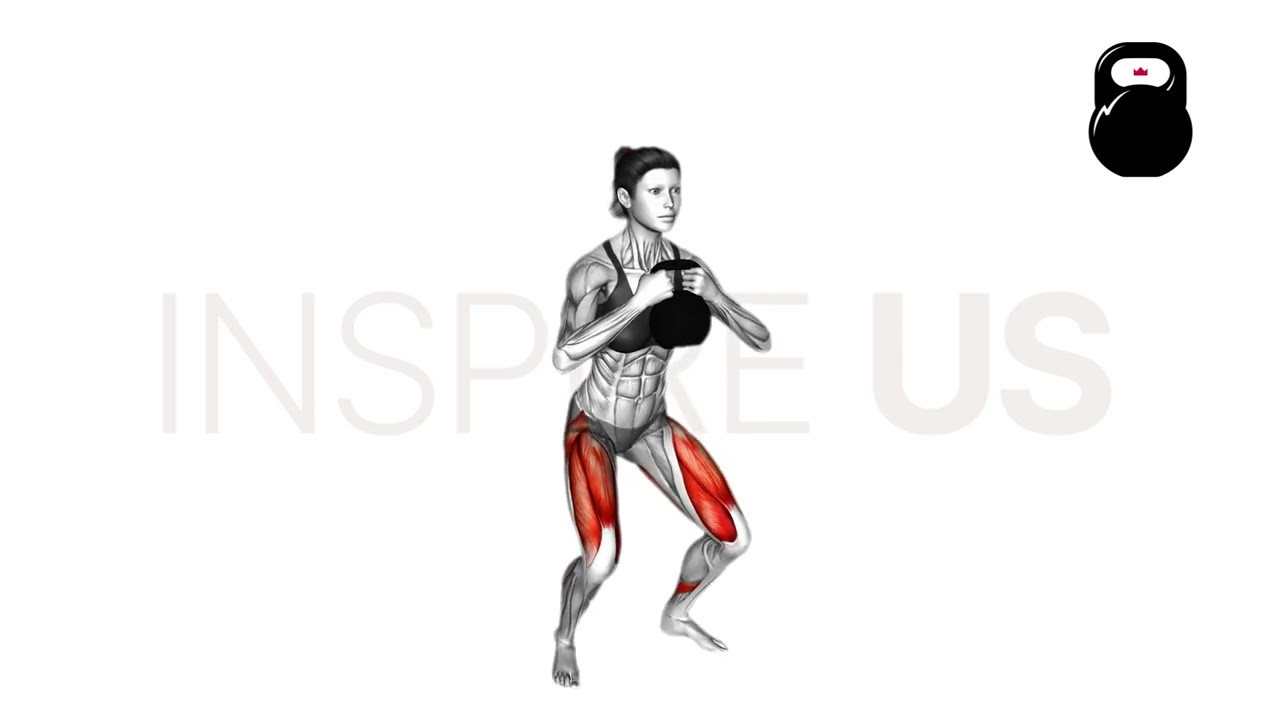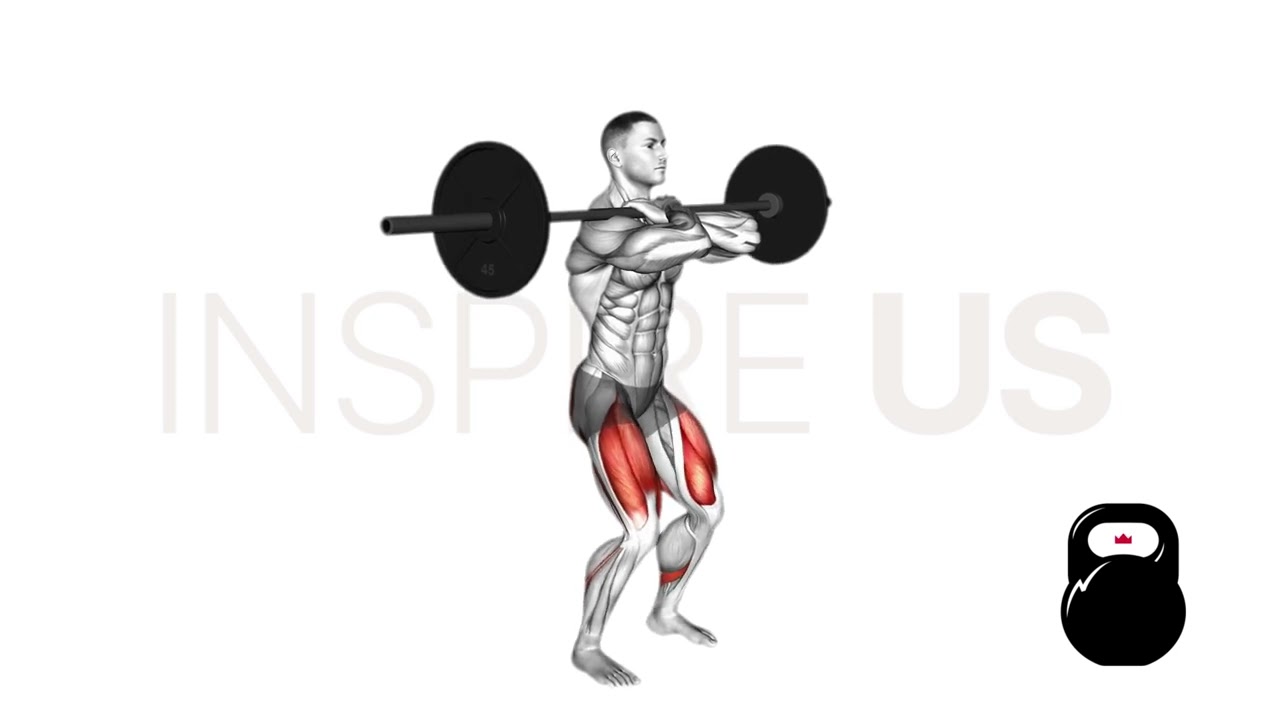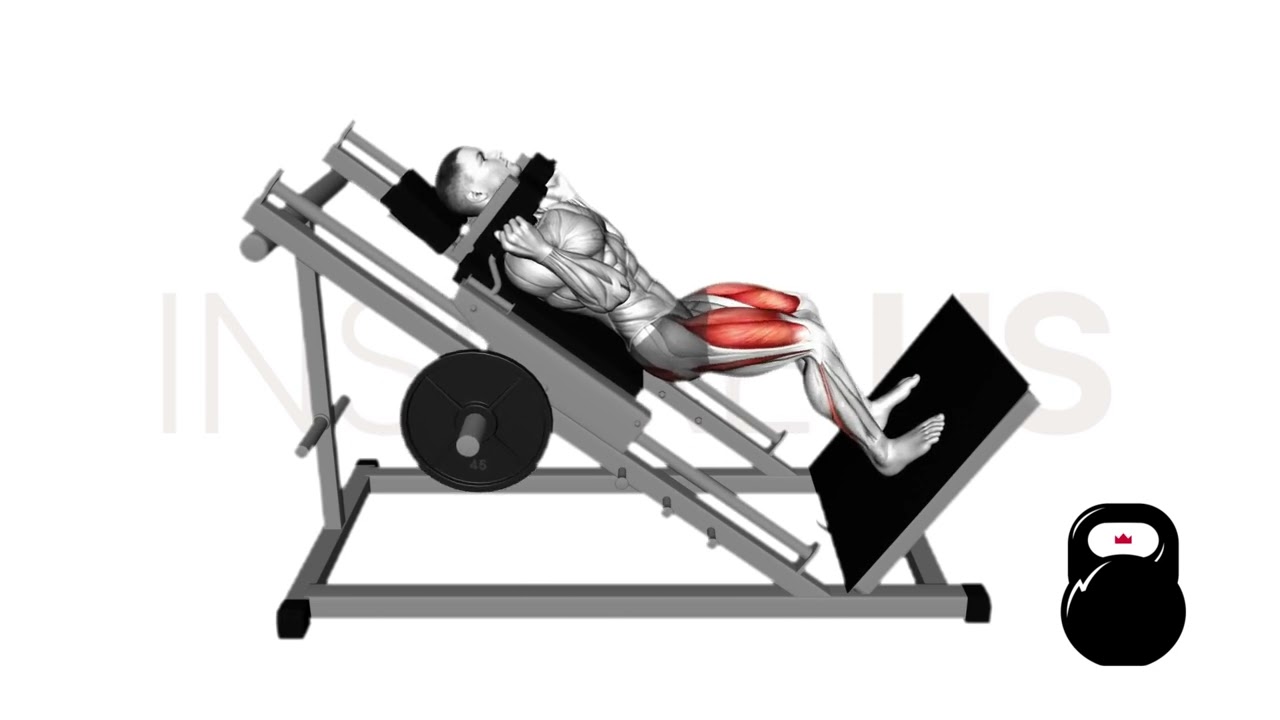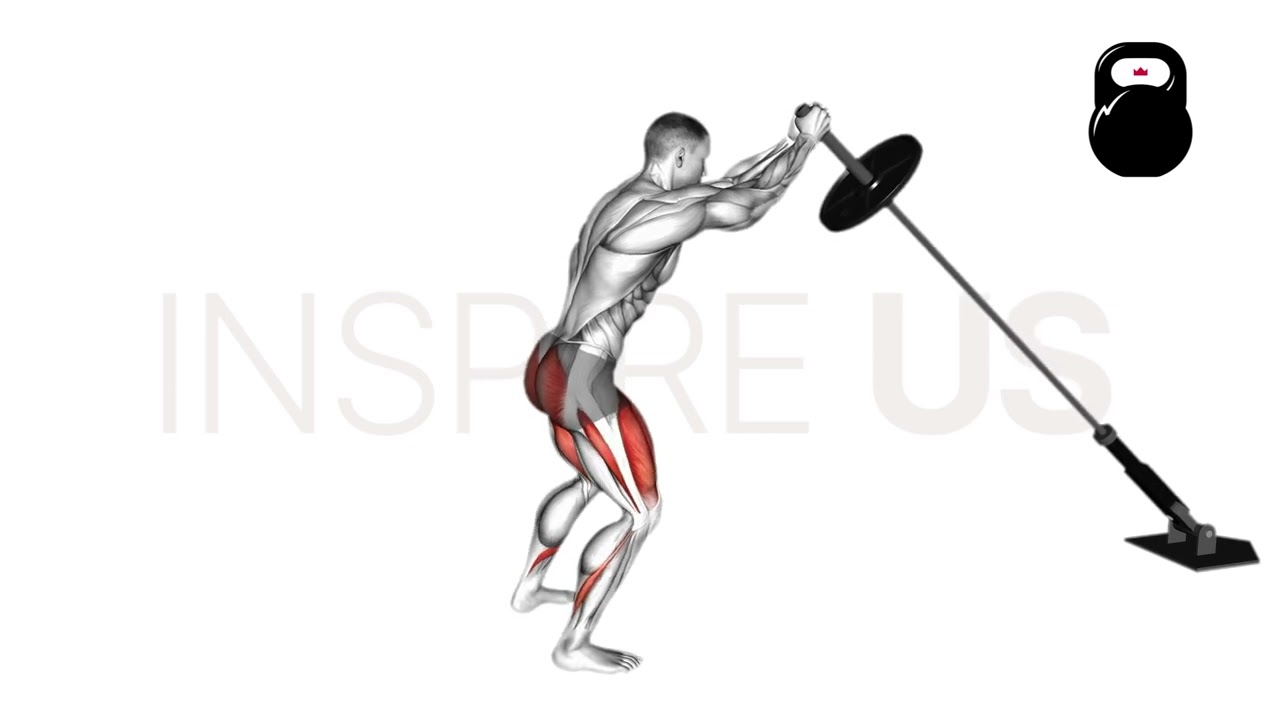4 Best Landmine Squat Alternatives (with Pictures!)
The landmine squat is a rather unique variation of squat known for its comfortability and capacity for targeting the anterior leg musculature.
Some of the best alternatives to this exercise include:
- Goblet Squats
- Front Squats
- Machine Hack Squats
- Landmine, Overhead Squat
Goblet Squat Alternatives
If No Landmine is Available: Goblet Squats
Though the goblet squat is not quite an exact replica of the landmine squat, they are both anterior loaded bilateral squat variants that place greater emphasis on trunk verticality and quadriceps recruitment.
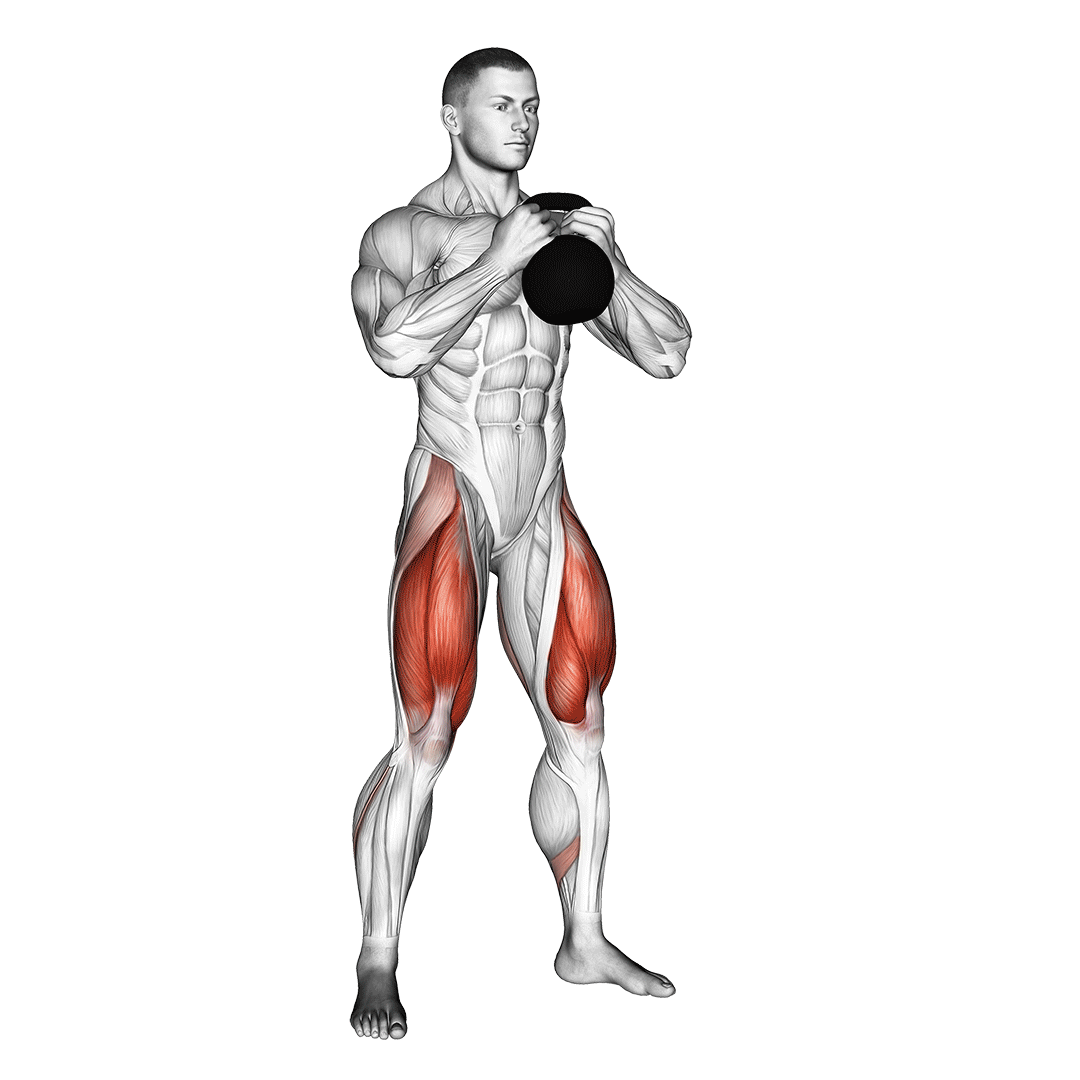
The sole difference between goblet and landmine squats lies in the loading capacity of the former, where grip strength and a slightly more vertical angle of resistance may limit maximum weight possible.
Equipment Needed
Goblet squats will require either a kettlebell or a dumbbell.
Sets and Reps Recommendation
Depending on the current level of strength the lifter possesses, relying on volume over loading may be required to reach muscular failure.
Otherwise, for less experienced lifters, 3-5 sets of 8-16 repetitions at a moderate load should suffice.
Common Mistakes to Avoid
Like other anterior loaded squat variations, the goblet squat is more likely to result in a poor torso orientation if the lifter fails to properly brace their core. A good cue to follow is to puff the chest out and keep the chin raised - allowing for a more vertical trunk orientation.
How-to:
- To perform a repetition of the goblet squat, the lifter will begin by first setting their feet slightly wider than shoulder-width apart, toes pointed forwards, core braced and trunk kept vertical.
The weight should be held between both hands in a goblet grip, kept close to the front of the chest. - Now positioned correctly, the lifter hinges back at the hips and bends at the knees - descending until their hips are at least parallel to the knees.
- Once reaching at least parallel depth, the lifter completes the repetition by driving through their heels and rising back to a standing position. The weight should remain in place at the front of the trunk throughout this repetition, and the trunk itself as vertical as possible.
For a More Vertical Angle of Force: Front Squats
Though landmine squats are indeed an excellent anterior loaded squat variant, few compare to the front squat in terms of angle of resistance or quadriceps emphasis.
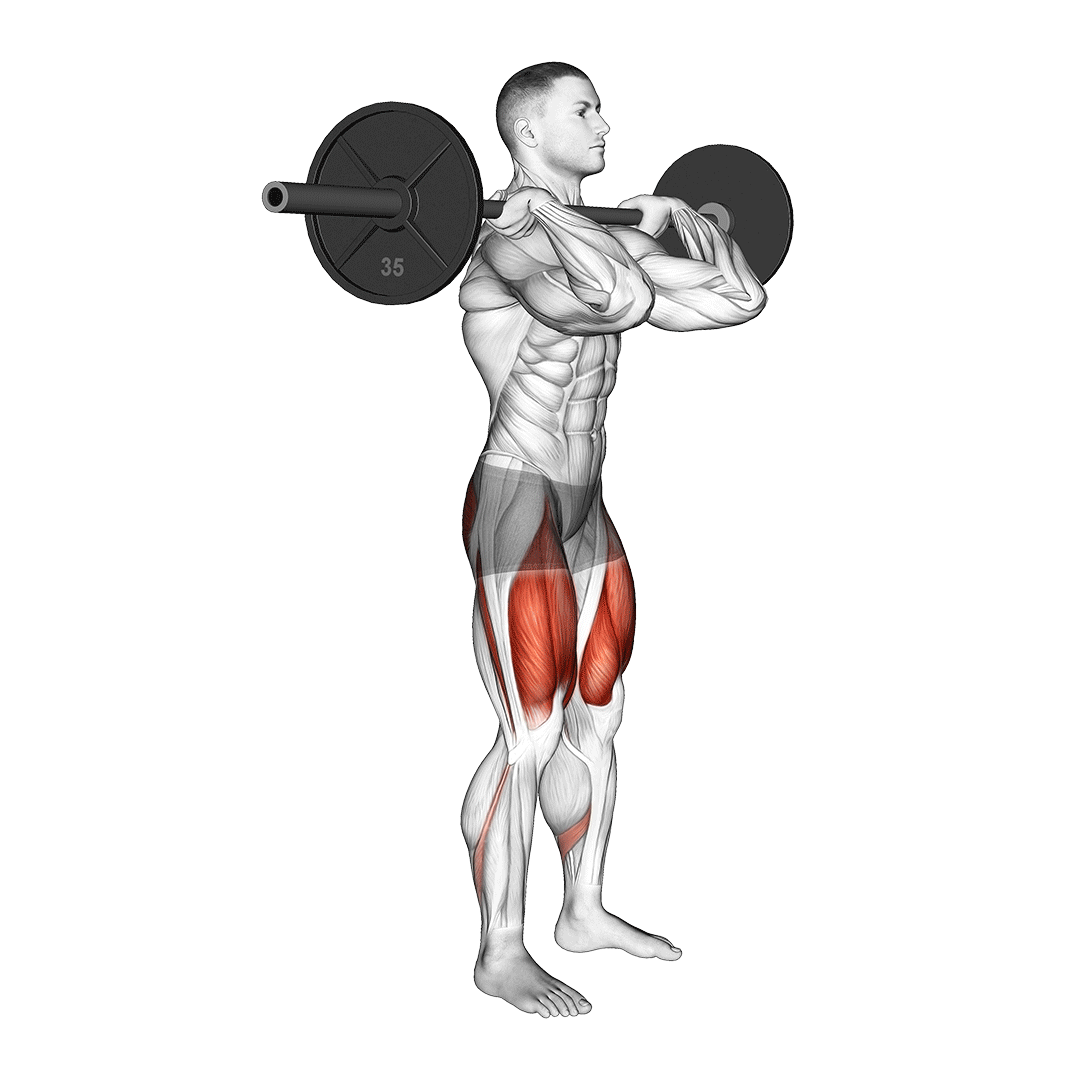
The front squat may be considered less a landmine squat alternative and more so an upgrade - so long as the lifter possesses the mobility and technical expertise needed to take advantage of it.
Equipment Needed
Front squats require only a barbell and a set of weight plates. A rack may also be needed to aid with setting up the movement.
Sets and Reps Recommendation
Front squats are incrementally more taxing and complex than their landmine cousin, requiring somewhat less volume and load as a result.
3-4 sets of 8-12 repetitions at a light or moderate load will be more than enough for most general training purposes.
Common Mistakes to Avoid
Like goblet or landmine squats, front squats are also commonly performed with poor trunk orientation. Lifters should ensure that the bar is appropriately racked atop their chest with the hands securing it in place.
How-to:
- To perform a repetition of the barbell front squat, the lifter unracks a bar atop their chest shelf with the hands bent backwards beneath - the elbows pointing outwards at all times.
The feet should be set approximately shoulder-width apart, if not narrower. The chest should remain upright and the trunk itself vertical throughout the set. - Now in a front rack stance, the lifter draws their hips backwards and downwards before bending at the knees - lowering themselves to at least parallel depth as they do so.
- Once at a sufficient depth, the lifter “pushes the floor away” as they rise back into an upright stance. This completes the repetition.
If the Lower Back is a Concern: Machine Hack Squats
Machine hack squats are a variation of bilateral squat involving far greater emphasis on the quadriceps muscles and a greatly reduced risk of injury.
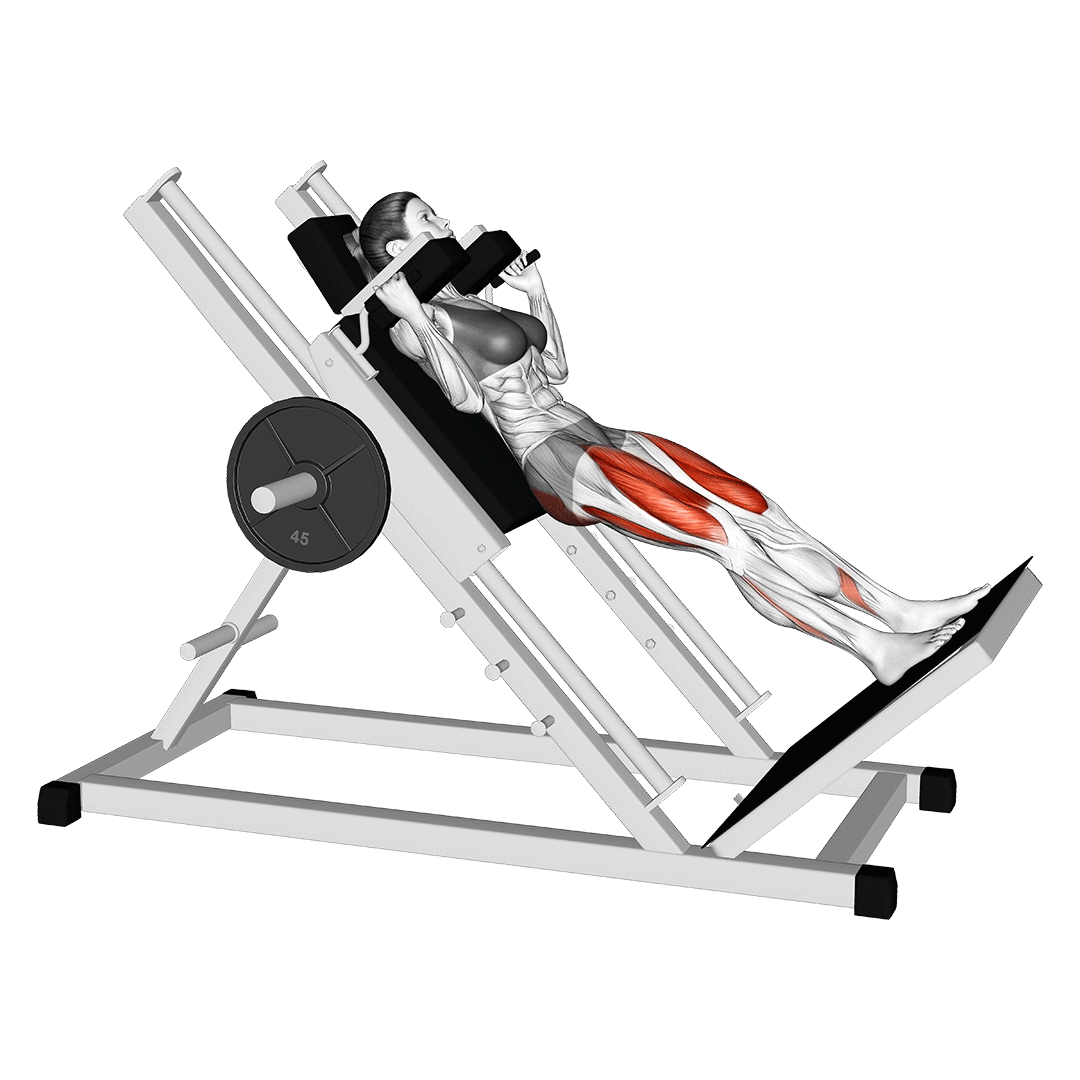
In comparison to the landmine squat, hack squats allow for a similar level of intensity and recruitment pattern while placing as little strain along the back as possible.
For lifters who are particularly concerned with safety (even with anterior loaded squat variations), the machine hack squat can present a viable alternative.
Equipment Needed
Machine hack squats will fittingly require a hack squat machine - the majority of brands being plate loaded, meaning that a set of weight plates may also be required unless a weight stack is included.
Sets and Reps Recommendation
Though safer, the self-stabilizing nature and fixed movement path mean that machine hack squats aren’t the best for functional strength training. Instead, a focus on volume is preferable.
3-5 sets of 8-12 repetitions at a light or moderate load is an excellent starting point for first time hack squatters.
Common Mistakes to Avoid
Lifters may find themselves squatting away from the back pads, increasing the angle of their trunk and reducing the efficiency of the movement.
Rather than bending forwards, lifters should drive their back and hips into the pad, pushing through their heels as they do so.
How-to:
- To perform a repetition of the hack squat, the lifter will begin by first positioning themselves within the machine, feet facing outwards (aligned with the plate) and their shoulders against the pads.
- From this position, the lifter disengages the safeties and drives their hips backwards and downwards simultaneously - bending at the knees as the hips lower.
- Once the crease of the hips are at least parallel to the knees, the eccentric half of the repetition has been completed.
- From this point, the lifter pushes through their heels and slides the sled back upwards until they have returned to their original position - completing the entire repetition.
If a More Athletic Exercise is Needed: Landmine Overhead Squats
For athletes seeking an even more intense progression from landmine squats, simply raising the end of the bar overhead will help to challenge the deltoid and core muscles even further.
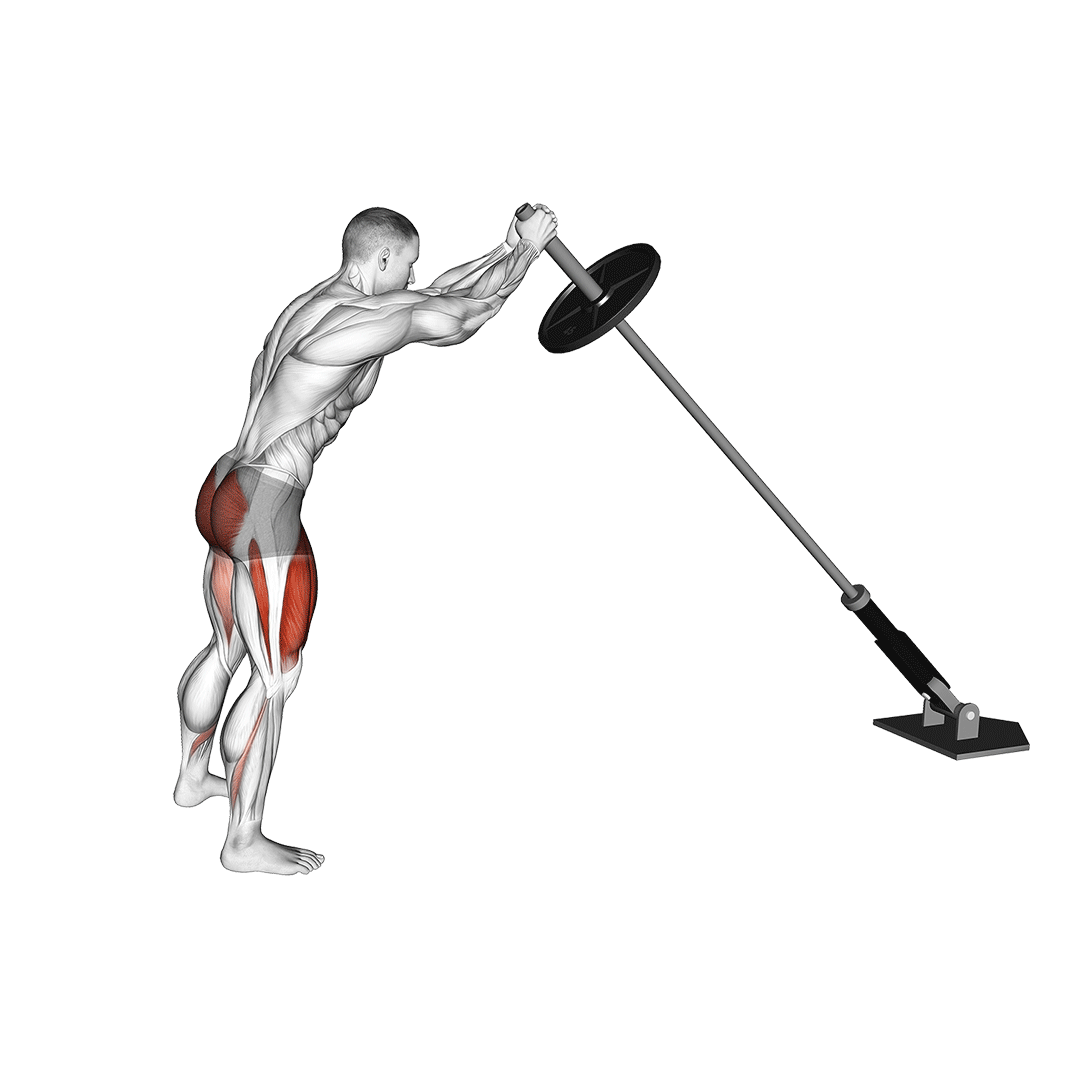
In addition, the overhead squat position is excellent for Olympic weightlifters and similar types of athletes that frequently replicate a similar stance.
Equipment Needed
The overhead variant of landmine squat requires much the same equipment - a barbell, a set of weight plates and a landmine.
Sets and Reps Recommendation
Because maximal loading is limited due to the overhead nature of the movement, lifters will need to rely on higher repetition ranges to reach momentary muscular failure.
2-4 sets of 12-16 repetitions with a light amount of weight will be best for general athletic development.
Common Mistakes to Avoid
Just like with conventional landmine squats, the overhead landmine squat is particularly likely to cause forward-rounding of the shoulders and upper back. This should be avoided by keeping the shoulders neutrally rotated and the chest as upright as possible.
How-to:
- To perform a repetition of the overhead landmine squat, the lifter begins by hoisting the free end of the barbell straight over their head, elbows fully extended, core braced.
- Keeping these form cues tight, the lifter then pushes their hips backwards and bends at the knees - sitting back as they maintain proper trunk verticality and the barbell over their heads.
- Once reaching parallel depth at the least, the lifter rises explosively out of the hole by driving through their heels.
- If performed correctly, they should be back in a standing position, barbell still held aloft. At this point, the repetition is considered to be complete.
Which Landmine Squat Alternative is "Best"?
In truth, practically all anterior loaded squat variations can function as a landmine squat alternative.
The key is to find one that best fits your specific training goals and physiology - those with a history of back issues may want to select safer exercises, for example.
Apart from those listed in this article, the machine belt squat and Zercher squat can also act as viable substitutes in certain situations.
References
1. Collins, Kyle et al. “Differences in Muscle Activity and Kinetics Between the Goblet Squat and Landmine Squat…” Journal of strength and conditioning research vol. 35,10 (2021):2661-2668. doi:10.1519/JSC.0000000000004094

